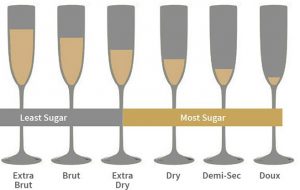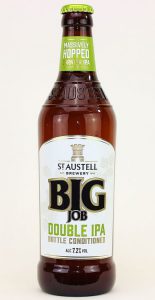There is no disputing that the India Pale Ale or IPA is a staple that’s here to stay. From its humble origins as a practical way to ship beer across the Empire to our modern craft interpretations, IPA has fast become a mainstay of every quality beer emporium.
Spurred by the current Pied Piper of brewing: hops, drinkers are fast becoming used to and acquiring a taste for this lupulin driven excitement, whether it be a DIPA, Farmhouse, Belgian, Traditional, Black or New England, to name but a few.
In addition to which, this lupelin furore is showing no sign of stopping! Enter Brut IPA, the new kid on the block. So, could we now be entering the era of the Brut IPA? Recent trends witnessed here at Murphy’s would suggest so, that Brut IPA is fast becoming the must brew style of 2018.
Unlike the name might suggest, this beer style has no connection with the cheap aftershave still available at a discount price from your closest Superdrug! In fact, its namesake is much more sophisticated, tasteful and considerably more expensive per bottle. We are of course talking about Champagne or more accurately the scale used to describe the sweetness of Champagne.

As you will see, Brut is the second driest champagne available and it’s this dry palate that is the key weapon in the arsenal of this revered style (oh yes, there are of course Extra Brut IPA’s being brewed too). What else makes this beer stand out? You guessed it, hops by the bucket load! Lots and lots of juicy, fruity hop flavours but all from late additions; nobody likes their beer to be extra dry and bitter. Original gravities for this style typically range from the gentle 1045 up to 1070 and remember to keep the malt grist pale and simple. Though to achieve true Brut status you’ll need a low final gravity.
Origins of many modern beer styles are often shrouded in mystery, hearsay and myth. In contrast the Brut IPA has a largely undisputed founding brewery, with San Francisco’s Social Brewing leading the way in late 2017. In the brewing industries true spirit of collaboration, their brewer, Kim Sturdavant fast shared the secrets of this new quaffable success with fellow local brewers and it’s from that pocket of California that word has spread.
At the risk of stirring the pot…
During our discussions about the content of this blog post we realised that, since 2012 Murphy and Son have already been supplying a UK brewery to aid in the production of something very similar! St Austell Brewery’s Big Job is a multi-award winning Double IPA with a wort of OG 1057 which attenuates right down to 998.5 and 7.2% ABV, balanced by a large dry hop addition this seems bang on for a Brut IPA to us! We’ll leave that thought with you.
So, how do we Brut-up an IPA?
Most brewers are turning to the power of enzymes, more specifically Amyloglucosidase (AMG to you and me). This enzyme acts by removing glucose from dextrins / oligosaccharides in a step by step manner, working along the non reducing end by hydrolysing both linear α -1,4 and branching α- 1,6 bonds. The removal of these dextrins eliminates any residual body and sweetness in the beer whilst providing extra fermentable glucose for the yeast!
AMG can be added in the mash to boost fermentability and extract, however, brewers of Brut IPA’s are choosing to add it directly to chilled wort (3-8g per hl) with rates dependant on required rate of attenuation. Using this method, production of super-attenuated Brut IPA is easy, and thus making a final gravity of close to and below 1000 is achievable.
Top tip…
Why not consider using sugars to raise the gravity of your brew? Dextrose monohydrate will raise the gravity without adding any further or non-fermentable sugars, helping keep the beer dry without adding body or colour.
Next time you are looking to brew an IPA why not consider going Brut?
To discuss the use of AMG or any of our other enzyme products please contact our technical team techsupport@murphyandson.co.uk, like to learn more about our technical team? Read our blog on who’s who and who’s new.
Headline image courtesy of http://doctorale.com/en/big-job-attention-hops-attacks/46137 on Flickr
Co-authored by Iain Kenny and Mat Henney

